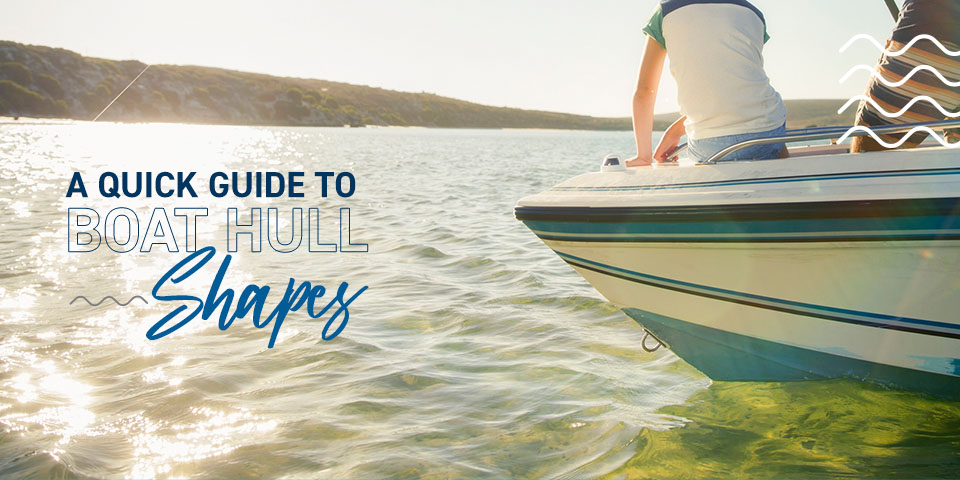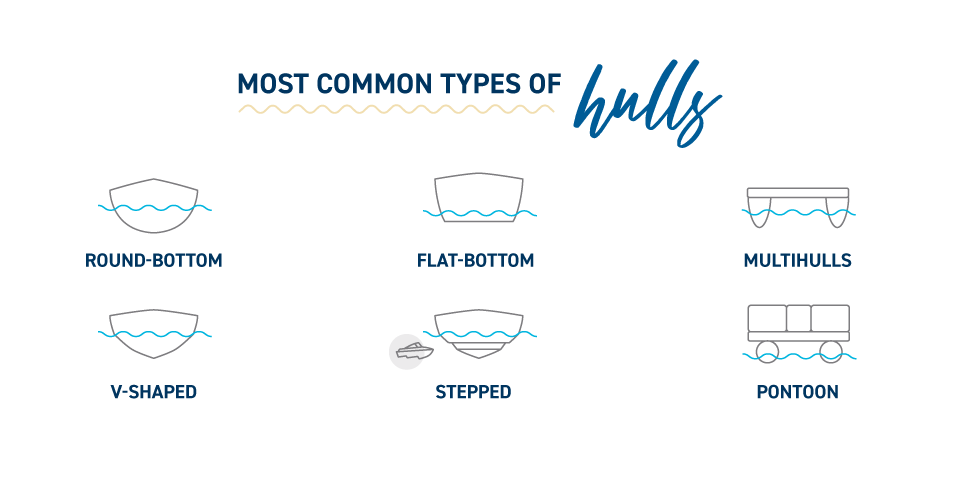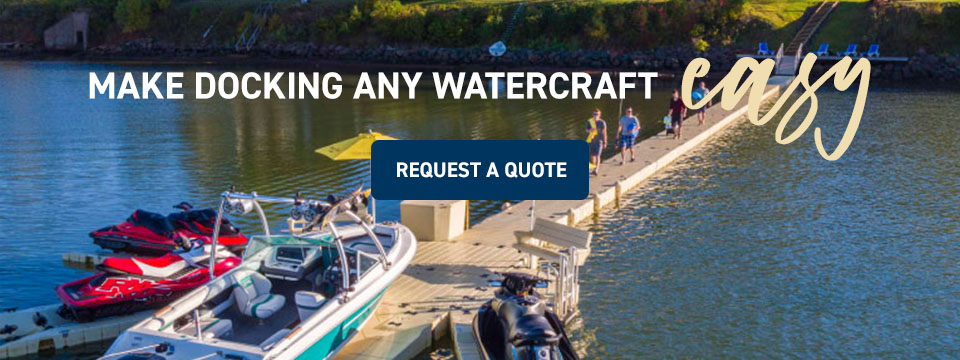Filters
A Quick Guide to Boat Hull Shapes
Are you new to the boating scene and in the market for a boat? Then you’ve probably heard that you need to consider the types of boat hulls. All boat hulls can either ride on top of the water or displace it while traveling. However, there’s more to them than simply how they move vessels on the water. When making a decision to buy a boat, you can choose from many different shapes that all have their own advantages.
Learn more about the different types of hulls on a boat with this quick guide and how to choose the best one for your needs.
Most Common Types of Hulls
The different boat hull types will determine the amount of available storage on board, the way the boat handles the water and the boat’s speed and stability. Boat hulls can be divided into three main categories:
- Displacement hulls: A displacement hull is any hull that helps boats cut and move through the water by pushing it aside. The weight of the boat is its displacement in the water, making those with displacement hulls slow but steady while being able to carry a lot of weight. Boats with displacement hulls include large ships, like cruise ships and sailboats.
- Planing hulls: A planing hull is designed to rise up and ride on top of the water rather than push through it like displacement hulls. It allows vessels to glide smoothly over the water surface, enabling them to reach higher speeds. This hull shape is typically found in speedboats and powerboats.
- Semi-displacement hulls: This type of hull gives the boat the advantages of both a displacement and planing hull. A semi-displacement hull has both round and flat sections. The round sections allow for additional storage while the flat areas raise the boat’s bow out of the water, reducing drag at higher speeds. Some cruising motor yachts have hulls like this and they typically require a high-powered engine.
Below are the most common hull shapes and how they affect performance. They may fit into one or a combination of the three categories.
Round-Bottom Hulls
Hulls with a round bottom are a type of displacement hull. They are designed to roll with the waves. Canoes have round-bottom hulls, as do most sailboats. The rounded shape creates little resistance, allowing boats to move smoothly through calm and rough water at slower speeds. However, they can be unstable and easily roll over.
Flat-Bottom Hulls
A flat-bottom hull is a type of planing hull, which means it can glide on top of the water. Water vessels with this boat hull design are very stable and only need a small engine to start planing. However, they are very rough in inclement weather and choppy waves — they are best for calm waters like lakes, ponds and shallow rivers.
Multihulls
Multihulls are recognizable as two or more distinct separate hulls on one boat. These hull types fall within the displacement or planing hull category depending on their shape and the size of their engines. Because of its wide beams, multihull boats like catamarans and some sailboats are faster and more stable than monohull types. Although they handle rough water well, they have a large turning radius.
V-Shaped Hulls
V-shaped or V-bottom hulls fall within the planing category. They’re a common hull design for speed boats, especially those meant for recreational activities. V-shaped hulls allow for smooth rides at high speeds and perform well in rough or choppy water conditions. These boats do require larger engines and are less fuel-efficient than other hull designs.
People have modified V-shaped hulls to compensate for their instability while floating:
- Modified-V hulls: The modified design provides more stability without losing too much speed. It combines the best characteristics of the deep V-shaped hull with a flat-bottom section toward the stern.
- Stepped hulls: These contain steps or indentations that force water flow to separate from the hull. This design reduces water surface contact the faster it goes, creating less drag.
Pontoon
Pontoon boats float and ride on long buoyant tubes that usually consist of aluminum. Sometimes considered a multihull type, these planing boat hull shapes maximize the available deck space. Pontoon boats are stable and operate at low speeds on calm water. However, they have a large turning radius, like other multihull boats.
Choosing the Right Hull Shape
It’s important to match the hull shape to your next boat’s purpose and preferences. Here are some questions to consider:
- What type of planing hull handles rough water the best? V-shaped hull boats are the best for navigating smoothly through rough water conditions.
- What type of boat is most cost-effective for fuel? Boats with flatter hulls are more fuel-efficient at lower speeds, making them suitable for long-distance cruising.
- Which hull type will give me the most speed? V-shaped hull boats are best for the waves and rough waters out on the ocean, while flat-bottom boats work well on calm water bodies.
- What boat type is best for any type of water? Boats with V-shaped hulls offer the most versatility and practicality.
EZ Dock Boat Docks Can Make Docking Any Watercraft Easy
You can dock any boat easily by using one of our EZ BoatPorts — whether for recreational or business purposes. Our floating docks are durable, slip-resistant and modular and require little to no maintenance. The Optimus BoatPort is customizable to fit different boats and can easily accommodate stepped hull boats with our optional Stepped Hull EZ Slide.
Request a quote online for details on the products you’re interested in. Not sure what is best for you? Our dock experts can help you find a configuration that fits your needs and budget.













